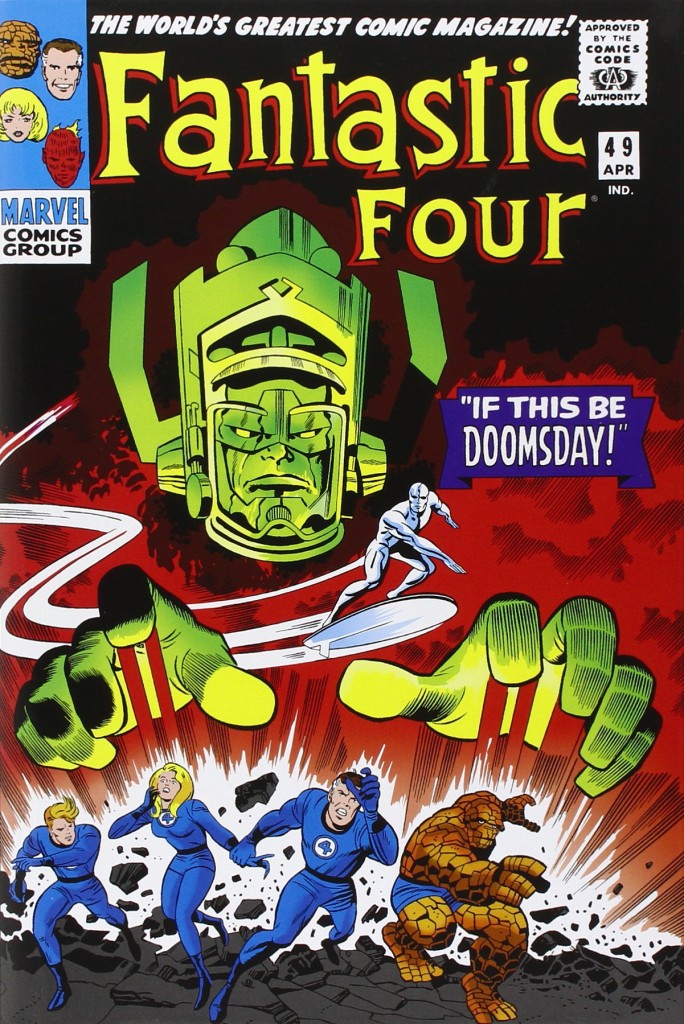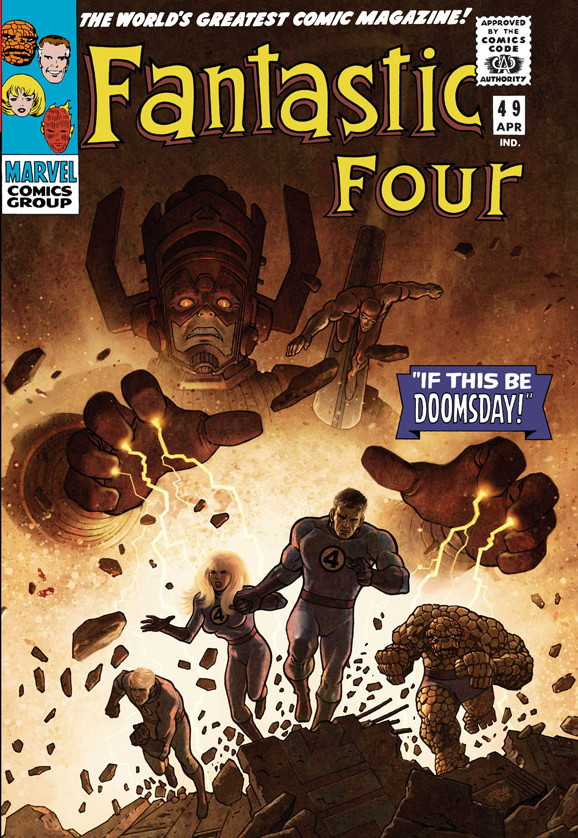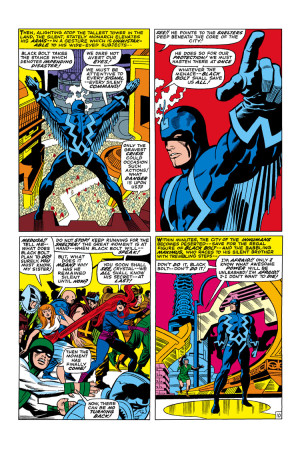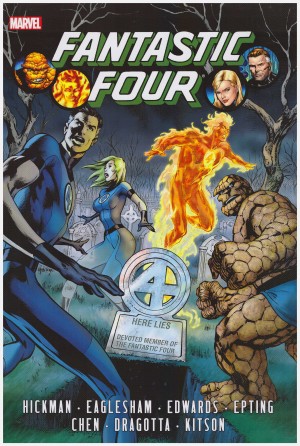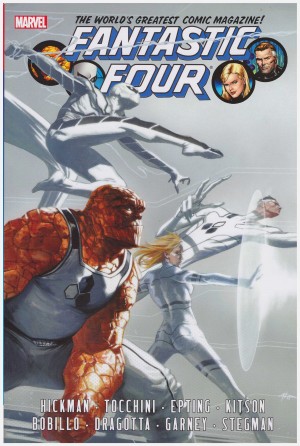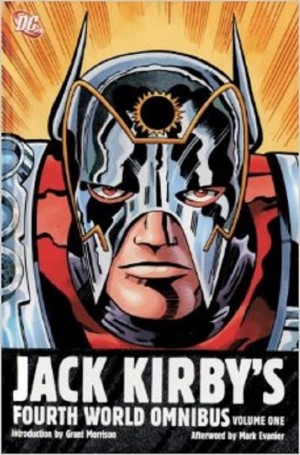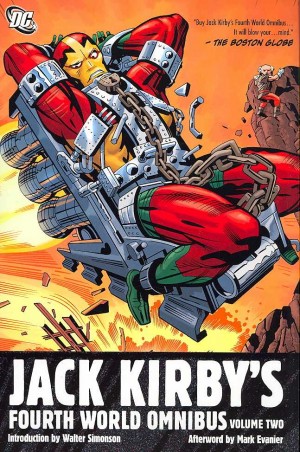Review by Graham Johnstone
Stan Lee and Jack Kirby’s run on Fantastic Four spanned most of the 1960s. This second massive hardback Omnibus, collects the material in Marvel Masterworks: Fantastic Four volumes 4 to 6, representing the middle of their run.
The biggest draw here is Jack Kirby’s energetic, inspired art work. There were always moments of wit, inspiration, pathos, and charm to the stories, but here they move up a league. Storylines continue across issues, complete with episode cliffhangers.
In it’s day FF was considered notable for the characters having personalities, albeit limited ones. Most interesting to consider here is Sue Storm: initially given the most passive, feeble power, as Invisible Girl. Lee and Kirby seem caught between their intrinsic liberalism, and the gender constructs of the time. In one story she invisibly pranks her fiancé Reed, and team-mates Ben and her own brother Johnny corner her for him. Next she’s lured with the promise of fashion ideas into a trap by Medusa and her cronies, then taken as a hostage and bait to trap the others. Thankfully, she’s able in the end to use her now expanded powers to save the whole team from mortal danger.
This volume includes some iconic stories, and introduces supporting characters that remain lucrative properties fifty years later. We visit the mountain retreat of hidden race the Inhumans. In the African kingdom of Wakanda, the FF meet the Black Panther – the first black superhero in mainstream comics, given his name before the political organisation. Then it goes from international to extraterrestrial, with the arrival of the planet devouring Galactus, and his herald the Silver Surfer. This is genuinely imaginative and thrilling, and rightly one of the most famous stories of the series.
By this time Kirby was conceiving most of the content, with Lee simply scripting the final pages. Kirby has a mythic power to his stories, but combined with a certain naivete. They’re better leavened with Lee’s knowing, ironic scripting – it’s easier to accept the more implausible aspects because he flags them up before we do. For example, through the sarcastic Grimm, he mocks the familiar cliches of jungle stories, in the Panther’s origin sequence and family history.
While the three episode Frightful Four story was a chore to read, the extended Doctor Doom ones are genuinely thrilling. One is global, as he taps the Silver Surfer’s reality-changing power, freezing islands, turning the sky black, and the air to acid. The other is on a more domestic scale as he takes over the Baxter Building, the FF’s base and home. It was an achievement that Lee and Kirby made the reader believe that these fantastically powerful heroes might struggle or actually lose the battle, and that’s very true of the Doom stories in particular.
These thrills far outweigh the run of the mill, represented by appearances from Sub-Mariner, Diablo, and four episodes of ‘evil FF’ the Frightful Four.
Kirby’s art here is some of his best ever. It’s so effortlessly brilliant, so inventive, that few people will pause to fret over the occasional implausible elements, or plot hole. Those weaned on pseudo-photographic modern Marvel comics, may find this crude at first – but the action is so dynamic, the panels so brilliantly composed. Kirby’s also a master of settings, and epic interiors. Notable here is the Panther’s palace, which combines traditional African with futuristic Kirby. Joe Sinnott’s fluid yet precise inks preserve Kirby’s distinctive style, while adding greater naturalism.
These stories are also available in the black and white Essential Fantastic Four volumes 2 and 3.
